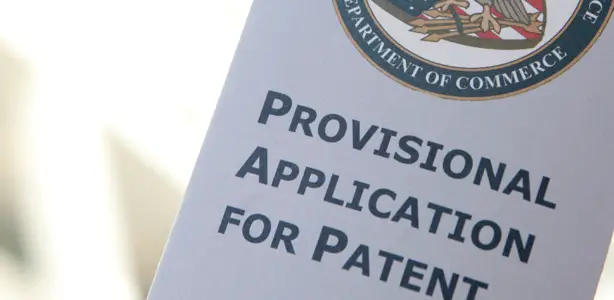Since 2013, the United States has been a “first to file” country when it comes to inventions. This means a competitor may beat you to the punch even if you come up with an idea first. One thing that may help you prevent this is a provisional patent. What is a provisional patent? Inventors like yourself should know what a provisional patent is in order to protect your invention. Here is a quick guide with some important points about provisional patents.
You Still Have To File An Application
The first notion that must be dispelled is that there is no such thing as a provisional patent. There is a provisional patent application, which stakes your claim and gives you a filing date, but a provisional patent in itself does not exist. Filing the application will allow you to mark your product with “patent pending” to ward off any thieving competitors and help to ensure future business success.
It Is Cheaper Than The Final Patent Application
Given the financial investment of putting a new invention into the market, it is worth noting that the provisional patent application is quite reasonable compared to the standard filing fee. A provisional patent application is $130, or $65 if you qualify as a small entity. Traditional patent application costs vary depending on the product type and the lawyer fees involved. However, costs can reach up to around $15,000. It would be unfortunate to lose the rights to a product given the small investment fee for a provisional patent application.
It Gives You 12 Months To Work Out Kinks
Filing a provisional patent application gives you 12 months to finalize your product before filing a corresponding non-provisional patent application. This gives the inventor time to work out kinks that may not be realized until later in the development stage. Be advised however, there are no extensions to a provisional patent application. Make sure you have a 12 month plan for bringing your invention to fruition before filing the provisional patent application.
There Are No Extensions
As mentioned above, there are absolutely no exceptions to this rule. You cannot extend your provisional patent past those initial 12 months. Thinking otherwise is one of the most common entrepreneur mistakes. Almost all other types of U.S. Patent Office deadlines can be extended if you have the money to do so. However, the provisional patent is the exception to that rule. No amount of money, negotiation or excuses will extend a provisional patent. Be sure to be prepared to file a corresponding non-provisional patent application, as the provisional patent 12 month deadline is a hard limit with zero exceptions.
Less Legal Involvement
Provisional Patent Applications are significantly cheaper than traditional patent applications. One of the reasons for this is that there are less lawyers involved. Full details do not need to be disclosed to legal parties at this time. However, it is worth including as much information as possible. The wording of the provisional patent application may determine the scope of protection on the invention. Drafting a complete picture with multiple angles of your product may save you from legal complications later.
Significant Changes Must Be Disclosed Along The Way
As you continue to work on your invention, you may discover problems that need to be addressed. This may result in some radical changes along the way. Modifications to the manner in which your product operates must be disclosed by filing a new provisional patent application. The same goes for new technical information that is added to the product. Failure to disclose these changes will render your provisional patent application null and void. That means the money you invested during its initial filing is wasted. Make sure not to fall victim to this and note all changes by filing a new provisional patent application.
Inventors like yourself should consider filing a provisional patent application when you are within 12 months of your products release to the market. This is one of the most important startup services to get done. It is an affordable option to protect your invention from competitors. However, it does come with some stipulations. The invention must be detailed in the provisional patent application otherwise it will not be protected. A provisional patent application may be useful to industries in a volatile market, or where there is heavy competition. What is a provisional patent? Thanks to this post, now you have your answer.
Photo from http://www.uspto.gov/inventors/independent/eye/201011/cover.jsp
 Business First Family Business, Accounting, Finance, Investing, Marketing And Management
Business First Family Business, Accounting, Finance, Investing, Marketing And Management
